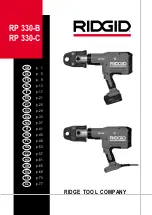
D-84030 Ergolding
Schinderstrassl 32
Parts/not included
Parts/
D
elivery
Contents
FesEx Uni8 System
quick start Guide
Parts Description/
Delivery
Contents
Installation aid (not shown)
E
Made in Germany
S
crews
for
attaching the locking sleeves to the motor shaft
(flatten the motor shaft at this point!)
(green)
mounting frame for the motor
customized for the model -
self build
Hacker Motor GmbH
Ball pin with prop adapter
8mm
L
ocking sleeve for mounting on the motor shaft
The FesEx Uni8 system
The FesEx Uni8 system consists of a locking sleeve with screws (for 8mm shaft), the ball
locking
pin
with prop
adapter
(blade spacing 31mm, 8mm blade mount), the bearing
frame
with
flanged ball bearing and the installation aid (stepped sleeve with 8mm inner diameter).
Optional accessories see below or in the online shop at
www.hacker
motors.us
.
Specification and accessories for the FesEx Uni8 system
The FesEx Uni8 system is designed for an output of up to 3.5 kW at speeds of up to 15,000
rpm. The maximum torque must not exceed 10Nm, whereby it should be noted that this also
applies to torque peaks such as those that occur when accelerating / braking or when in contact
with the ground.
The FesEx Uni8 system is designed for motors with an 8mm shaft diameter (tolerance 8g6);
spacer sleeves for 5mm and 6mm shafts are available as optional accessories. There are also
suitable prop
elastics
for the standard center piece (31mm) as accessories. Of course, all parts
are also available individually as spare parts.
If
,
after an incident, the system no longer engages 100% or is stiff, it
should
no longer be used
and must be sent to us for testing.
Installation of the FesEx Uni8 system
The FesEx system can be retrofitted to existing models or integrated into new builds. Due to
the construction, the fuselage remains intact and can be dismantled at any time – for example
if the model is sold. Since the motor is screwed on from the inside of the hull, no fastening
holes are necessary or visible from the outside.
The
creation
/ adaptation of the
bearing frame
(D)
and motor
frame
(E)
varies depending on the
model, motor and its
shaft
length and
is left up to the customer
. The frames must be adjusted
together with the supplied
installation aid
in order to obtain a smooth-running, correctly mounted
drive.
The locking sleeve is screwed to the motor shaft using the two screws. Please note the correct
position and tighten the screws well with a high-quality Allen
wrench
. It is recommended to grind
a
bevel
on the motor shaft and, if necessary, to apply an additional screw locking varnish. After
installing the motor with the
mounted
locking sleeve, push in the locking
pin
from the front and
check whether the
pin
fully
in to place
in all positions (turn 4x 90 degrees). A full snap
can be
D
(red)
Bearing
f
rame
detected when
the push button of the locking
pin
springs back completely into its original
position and the green marking ring is visible. The motor must be able to be turned easily by
hand without rubbing, both with and without a locking
pin
.
Now the
motor
can be connected to the controller and a first test run can take place without a
propeller
. Program the controller according to the motor instructions, set the brake and
acceleration to medium or soft so that the locking mechanism is not unnecessarily stressed. It is
essential to follow the instructions of the motor and controller manufacturer for this.
The first test run takes place without an inserted propeller up to full throttle (briefly). If there are
no suspicious noises, insert the
locking pin
without the
propeller
and start a new test run. There
must be no grinding noises!
N
ow
,
mount the propeller in the prop
adapter
. In order to achieve
safe folding, we recommend installing the optionally available prop
elastics
crosswise (see
original instr
uctions
.
)
No
w you are ready for a
test run under load.
Please only carry out test runs with the propeller outdoors. Also observe the safety instructions
in the motor manual.
Tips for pre-planning Fes drive
A
B
C
*
Select a landing gear that is as high as possible if ground launch is desired
*
Choose a wheel diameter that is as large as possible
*
Chassis position as far forward as possible
*
Choose the largest possible propeller (efficiency / noise)




















